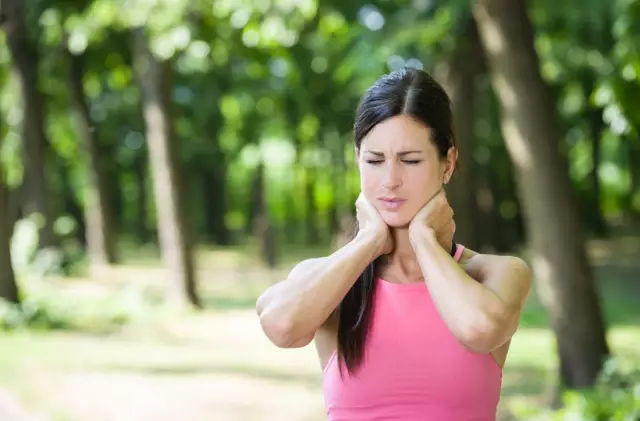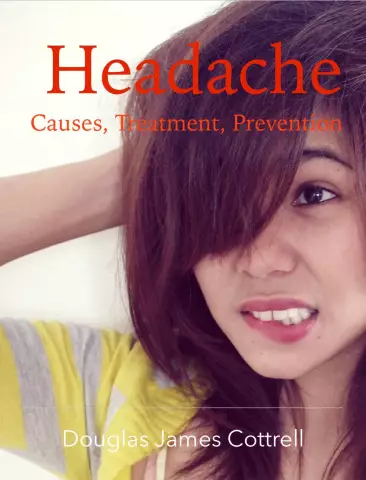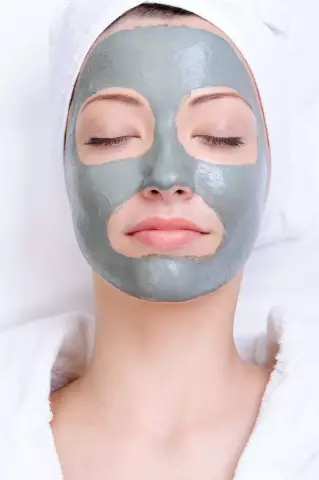- Author Rachel Wainwright [email protected].
- Public 2023-12-15 07:39.
- Last modified 2025-11-02 20:14.
Neck spasm

A spasm is a compression of: blood vessels, nerve bundles, followed by muscle tissue. First of all, the nervous tissue suffers, the regulation of vascular tone is disturbed. The blood in the veins stagnates, and under-oxidized metabolites are released. In response to their appearance, further vasospasm occurs, in order to limit the focus of inflammation. The transmission of nerve impulses to muscle tissue is disrupted, so a neck spasm occurs, which manifests itself in sharp pain. At first, like a lumbago. It happens after physical exertion, more often at the end of the day or on the second day. An attack is provoked by cooling - heat transfer receptors are triggered. It decreases due to the fact that there is a local spasm of the vessels of the neck, after which a strong muscle contraction involuntarily occurs, which does not allow turning the head.
Causes of neck spasm
Pathology is seasonal in nature, appearing in the spring, when "the weather is deceiving." Sunlight is similar in intensity to summer heat, but evaporation from the ground frozen over the winter provokes a cold wind. It is enough to appear in the yard several times without warm clothes to get a neck spasm the very next day. Therefore, the disease has received a popular name: dacha neck spasm, which haunts almost all people who open the dacha season. Physical activity in an open space leads to local hypothermia, which provokes a spasm of the vessels of the neck, which is necessarily followed by a convulsive syndrome. Of course, it has nothing to do with organic brain damage. However, neck spasm can lead to disability and neurosis.
In addition to local cooling, the following factors lead to spasm of the muscles and blood vessels of the neck:
- Abrupt, uncomfortable movements. An additional load on the spinal column in the region of the cervical vertebrae leads to a sharp filling with blood, which provokes a spasm of the vessels and muscles of the neck, accompanied by intense pain;
- Lack of sodium in the blood. The electrolyte is lost during general dehydration or is triggered by the intake of diuretics. In contraction, sodium plays a major role in providing the resting potential of muscle cells. When electrolyte is absent, a spasm of the neck muscles occurs, since there is not enough material substrate for their relaxation;
- Avitaminosis. Vitamins B and D, which provide muscle contraction and innervation, contribute to the development of spasmophilia. Spasm of the neck muscles in such cases is the initial stage of the disease.
Hypothermia, the presence of an intervertebral hernia of the cervical spine, as well as improper nutrition, coupled with spring vitamin deficiency, contribute to the development of dacha neck spasm, which has a seasonal character. At other times of the year, the incidence sharply decreases for quite understandable reasons: people dress for the season, do not suffer from vitamin deficiency, have time to be examined by neuropathologists for cervical intervertebral hernia and other manifestations of osteochondrosis.
Neck spasm symptoms
In more than half of cases, neck spasms occur after an injury. Less often, its appearance is provoked by accumulated fatigue. When inflammation of the muscle tissue, called myositis, develops, the pain usually occurs on one side, and spreads along the lateral surface of the neck to the shoulder girdle, involving the occipital region. Painful "lumbago" as symptoms of neck spasm are felt down the arm to the fingertips. Myositis is always accompanied by numbness of the skin.
Symptoms of neck spasm are accompanied by violations of all functions of the muscular apparatus and are manifested by the following sensations:
- Difficulty swallowing;
- Change of diction;
- Violation of the breathing process, with difficulty in exhaling due to pain;
- Restriction of head movement.
Typically, a neck spasm is accompanied by a severe headache starting in the occipital region. In this case, the blood pressure remains unchanged.
How to relieve neck spasms
In the acute period, it is not recommended to engage in physiotherapy exercises, however, recently a whole trend has formed in neurology, which states that physical exercises can and should bring relief. Proponents of active treatment know how to relieve neck spasms by stretching the spine. Special exercises are performed to increase the blood supply to the muscles. The vessels open and let the retained metabolites pass, which enter the general bloodstream and are rendered harmless in the liver. Thus, the cause of myositis is eliminated. Since it is possible to relieve neck spasms only by stopping the triggering mechanism of pathology, adherents of active treatment find many supporters.

However, physical activity can lead to tears of the fibers of the edematous muscles, which further aggravate the course of the disease. In the classical version, all physiotherapeutic procedures and therapeutic exercises are carried out after the neck spasm has been relieved, which is performed by the following methods:
- Novocaine blockade - relieves pain almost instantly, performed by a doctor;
- Acupuncture in the area of active points is done only by an IRT specialist who knows exactly how to relieve neck spasms without dangerous consequences;
- Manual therapy is effective in case of a confirmed diagnosis: “herniated discs”;
- Post-isometric relaxation is a technique of non-violent muscle stretching followed by relaxation;
- Laser and cryotherapy are certainly effective methods for relieving neck spasms, but not available to everyone;
- Medical treatment with drugs from the group of non-steroidal anti-inflammatory drugs as prescribed by a doctor;
- Local treatment - ointments, traditional medicine.
It is necessary to eliminate vitamin deficiency and electrolyte deficiency. A special diet is selected, it is recommended to take multivitamins (neuromultivitis, pentavit).
Found a mistake in the text? Select it and press Ctrl + Enter.






